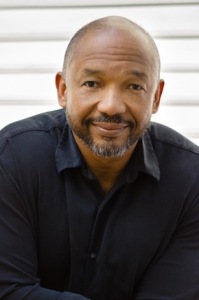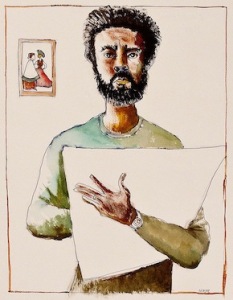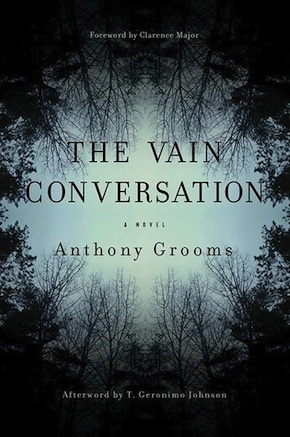Beyond imagining
by Clarence MajorWilla Cather in Death Comes for The Archbishop was able to create imaginary conversations and actions that gave her main character (based on Father Jean Marie Latour) and story depth and motivation, metaphors and textures, a sense of fullness and believability, that may not have been accessible to her had she wrote the book as a biography restricted to facts and speculation.
Truman Capote’s decision to write In Cold Blood as a ‘non-fiction novel’ gave him a similar freedom to create a fictional truth out of facts that may have, by their very strict nature, placed limitations on Capote’s ability to tell a fully rounded story complete with details that facts alone could never render.
The same can be said of other books based on real events or real people, such as Leo Tolstoy’s War and Peace, about the Russian aristocracy as it was in 1812; and his Anna Karenina, whose protagonist was based on Anna Pirogova, a young woman who attempted suicide; Richard Wright’s novel, Native Son, based on an article he saw in a newspaper; Schindler’s List by Thomas Keneally, about the life of Oskar Schindler during World War 2; Agatha Christie’s book, Murder on The Orient Express and Psycho by Robert Bloch.
Anthony Grooms’ novel The Vain Conversation is based on reported news stories of a murder of four people. Grooms granted himself the same kind of fictive freedom Cather and Capote and the others mentioned above assumed. It gave him the chance to create his own ‘truth’ and fictional reality.
Grooms’ novel is set in the 1940s, before, during and after the war. The reader is brought into the lives of the boy, Lonnie Henson; his father Wayne Henson, the dog Toby; Lonnie’s mother Aileen Henson; Aileen’s Aunty Grace; Wayne’s ‘colored’ friend Betrand Johnson; Mrs Crookshank, owner of the diner and a reporter; Luellen, Betrand’s wife and his mother Milledge; Beah, the cook at Mrs Crookshank’s diner; her lover Jimmy Lee; and Vernon Venable, Jimmy Lee’s employer; Sheriff Cook, and a variety of other characters. As characters they have the ring of truth because what they experience sounds familiar to us; we recognize the validity of their lives. We see them come to life.
Both couples were African-American; and despite an FBI reward offer of $12,500 for information leading to their capture, the murderers were never identified and brought to justice.”
But what were the facts? Some of the main facts of the case: the murder of the four sharecroppers took place in rural Walton County, Georgia, on July 25, 1946. The victims – shot sixty times – were two couples: Roger Malcolm and his wife Dorothy Malcolm and George W. Dorsey and his wife Mae Murray Dorsey. It’s a fact that four people were murdered on that day.
Both couples were African-American; and despite an FBI reward offer of $12,500 for information leading to their capture, the murderers were never identified and brought to justice. Mae Murray Dorsey was pregnant at the time, and her body was found with the fetus cut out.
Time magazine, August 5, 1946, reported that Loy Harrison, the employer of some of the victims, reportedly saw the killings. He is quoted: “A big man who was dressed mighty proud in a double-breasted brown suit was giving the orders. He pointed to Roger Malcolm and said, ‘We want that nigger.’ Then he pointed to George Dorsey, my nigger, and said, ‘We want you too, Charlie.’ I said, ‘His name ain’t Charlie, he’s George.’ Someone said ‘Keep your damned big mouth shut. This ain’t your party.’”
This is Grooms’ imaginary fictional account:
The crowd was coming toward them, about fifteen men. Two of them were Cook’s deputies…
“There are women in the car,” Bertrand said. “A pregnant woman.”
All was lost now. All the dream of whatever God had created for them, lost.
He wondered at that moment why it was that he had been born and survived war, only to meet his fate, here, in his home country.
A car was pulling up behind them… Oh, God, let her get away.
Let her run!… Cook, pointing to Jimmy Lee, was rushing past Jacks…”
Readers looking for the facts will turn to the historical record. Readers who want the experience of an imaginative version with depth and nuance and fully developed characters to carry the story will find satisfaction in Anthony Grooms’ novel. It is a fine novel, beautifully written.
He explores the subject for all it is worth. And the novel exists independently of the set of facts regarding the mass murder that inspired it. The reader need not know anything about the actual murders because this is a work of art – a work of art that earns its rightful place (to borrow words from William Faulkner’s Nobel ‘Banquet Speech’) as “something that did not exist before.”
It is a novel I will never forget. Its lessons are deep. Those who turn to this book will come away with a greater understanding of human nature. This book should also be seen as a true testament to what Georgia and the Deep South generally were like before and during the 1940s.
Reproduced from the foreword to The Vain Conversation with permission from the University of South Carolina Press
 Anthony Grooms is the author of Bombingham: A Novel and Trouble No More: Stories, both winners of the Lillian Smith Book Award for fiction. Born in Charlottesville, Virginia, he has taught writing and American literature at universities in Ghana and Sweden and, since 1994, at Kennesaw State University in Georgia. The Vain Conversation is out now in hardback and eBook from Story River Books, an imprint of the University of South Carolina Press.
Anthony Grooms is the author of Bombingham: A Novel and Trouble No More: Stories, both winners of the Lillian Smith Book Award for fiction. Born in Charlottesville, Virginia, he has taught writing and American literature at universities in Ghana and Sweden and, since 1994, at Kennesaw State University in Georgia. The Vain Conversation is out now in hardback and eBook from Story River Books, an imprint of the University of South Carolina Press.
Read more
anthonygrooms.com
Author portrait © J.D. Scott
 Clarence Major is a writer and painter. He is the recipient of multiple awards, including two Pushcart prizes – one for poetry, one for fiction – and a contributor to many periodicals and anthologies in the USA and internationally. His novels include Such Was the Season, Painted Turtle and My Amputations. He is currently a professor of twentieth century American literature at the University of California at Davis.
Clarence Major is a writer and painter. He is the recipient of multiple awards, including two Pushcart prizes – one for poetry, one for fiction – and a contributor to many periodicals and anthologies in the USA and internationally. His novels include Such Was the Season, Painted Turtle and My Amputations. He is currently a professor of twentieth century American literature at the University of California at Davis.
clarencemajor.com
Self-portrait © Clarence Major


